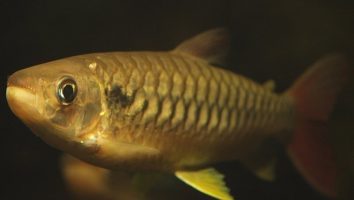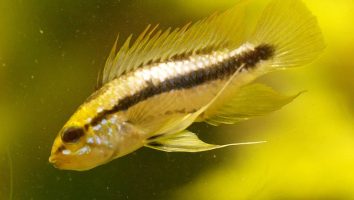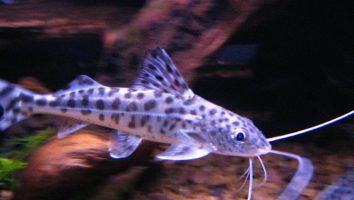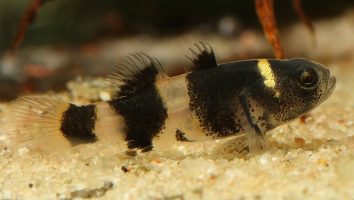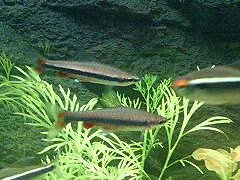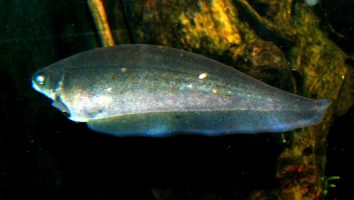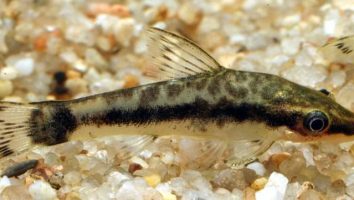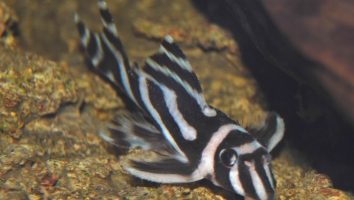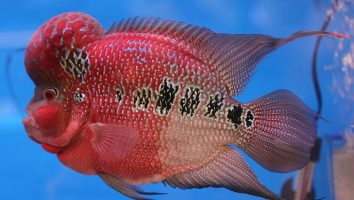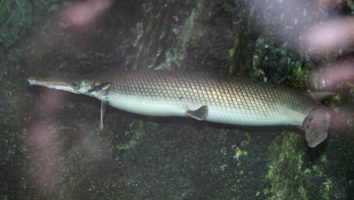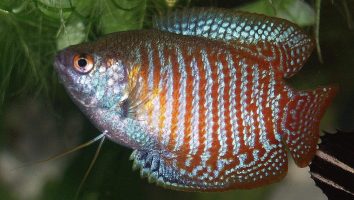The European minnow is a freshwater fish that is native to Europe.
This fish is not commonly found in the aquarium trade, but can be a great addition to your tank if you can find one.
This fish is relatively easy to care for, but there are a few things you need to know before you get one.
In this guide, we will go over everything you need to know about European minnow care. This includes their diet, tank mates, lifespan, and more!
Table of contents
Species overview
The European minnow (Phoxinus phoxinus) is a freshwater fish that’s found throughout most of Europe. They prefer cooler waters and can be found in a wide variety of habitats including ponds, lakes, and rivers.
This fish is a major player in the freshwater ecosystem and is an important food source for many predators. They are also a popular choice for baitfish.
Despite their small size, European minnows are actually quite hardy and can live for several years in the wild. In captivity, however, they tend to have a much shorter lifespan.
European minnows are a popular choice for aquariums and fish tanks. They are relatively easy to care for and are compatible with a wide variety of other fish.
Appearance
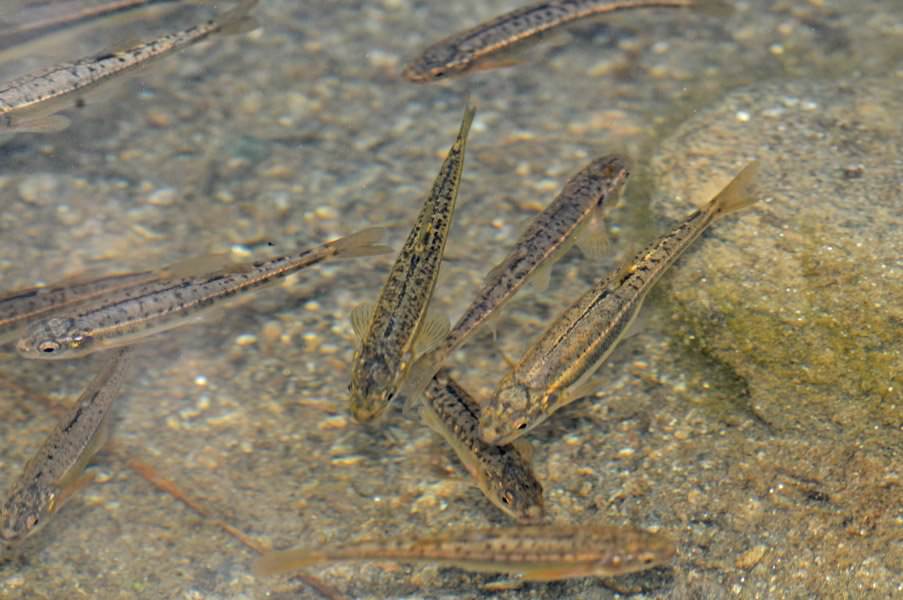
The European minnow is a small freshwater fish that is silver in color with a dark stripe running along their sides.
The body of the European minnow is long and slender with a slightly flattened head. They have a small mouth that is located at the tip of their snout.
The fins on the European minnow are all relatively small. The dorsal fin is located towards the back of the fish and is slightly higher than the other fins.
The caudal fin is forked and the anal and pectoral fins are both located towards the bottom of the fish.
The European minnow is a small fish that only grows to be about 2-3 inches in length.
Lifespan
The European minnow typically has a lifespan of 3 to 5 years. However, there have been reports of these fish living up to 8 years in captivity.
As with most fish, their lifespan will largely depend on the quality of care they receive. Things like water quality, diet, and stress levels can all impact their lifespan.
Size
The average size of a European minnow is between 2 and 3 inches long. However, some individuals have been known to grow up to 4 inches in length.
Tank
Tank Size
The minimum tank size for European minnows is 15 gallons. This is assuming you’re keeping them in a school of at least 5 or 6 fish (which you should).
We personally recommend a slightly larger tank if you can accommodate it. Every extra space will make a big difference and allow you to keep a larger school or more tank mates if you’re interested in a community tank.
Water Parameters
The water parameters you need to maintain for Rosy Red Minnows are very generous. This makes them a great freshwater fish for a beginner since there’s a lot of room for error.
The most important thing to remember when it comes to their water parameters is consistency. Even though these are very hardy fish, they can be sensitive to sudden changes just like any other freshwater species.
Even though they’re still a bit more durable in this regard, you should use this as practice. Challenge yourself to see how consistent you can keep the water parameters and how easily you can make an adjustment if needed. These skills will come in handy with other species you keep in the future!
- Water Temperature: 50°F to 78°F
- pH Levels: 7 to 8
- Water Hardness: Mildly soft to very hard
- Alkalinity Levels: 2-12 dKH
What To Put In Their Tank
The European minnow is a small freshwater fish that is found in ponds, lakes, and streams across Europe.
In the wild, these fish are used to living in a variety of different habitats. This means that they’re not too picky when it comes to the set-up of their tank.
The substrate in their tank can be anything from gravel to sand. We recommend something in the middle like small rocks.
These fish like to have some places to hide, so including some plants, driftwood, or caves is a good idea.
You don’t need to go overboard with this though. A few pieces here and there should be enough.
As for the water itself, the European minnow is tolerant of a wide range of conditions. This makes them a good choice for beginner Aquarists.
That being said, we still recommend doing your best to recreate their natural environment. This means a pH around 7.0 and a water temperature of 68-74 degrees Fahrenheit.
Common Diseases
The European minnow is a hardy fish that can withstand a lot of different water conditions. However, that doesn’t mean that they’re immune to disease.
There are a few different illnesses that these fish are susceptible to. The most common is probably ich, which is a parasite that can cause a lot of problems if it’s not treated quickly.
Another disease to watch out for is tail and fin rot. This is usually a result of poor water quality and can lead to some serious health problems for your fish.
If you notice any strange changes in your fish (such as white spots, redness, or fraying fins) then it’s important to take action immediately. The sooner you act, the better the chance is that your fish will make a full recovery.
Of course, the best way to prevent these diseases is by keeping the tank in good condition. A clean and stable habitat will go a long way in keeping your European minnows healthy and disease-free.
Behavior & Temperament
The European minnow is a schooling fish, which means it prefers to be around others of its kind. In the wild, these fish can be found in large groups near the shoreline in lakes and ponds.
In captivity, they should be kept in groups of at least six. But, the more the merrier! These fish are social creatures that enjoy the company of their own kind.
The European minnow is a peaceful fish that gets along with other peaceful species. It’s important to note that these fish are timid by nature. So, if you add aggressive tank mates, the minnows will likely spend all their time hiding.
These fish are known for being great swimmers. They have a streamlined body that helps them zip through the water with ease. In the wild, their diet consists of small insects and larvae. In captivity, they’ll eat just about anything you give them.
Tank Mates
The European minnow is a peaceful and hardy fish. As a result, it can be kept with a wide variety of tank mates.
These fish are also relatively small, so they can be kept in smaller tanks. This is good news if you’re working with limited space.
Some compatible tank mates for European minnows include:
- Guppies
- Platies
- Swordtails
- Mollies
- Tetras
- Barbs
- Danios
- Rainbows
Breeding
To breed European minnows, start by setting up a separate breeding tank. This should be a 20-gallon tank with a sandy bottom. Then, add some plants and decorations for the fish to hide in.
Next, fill the tank with water that has a temperature of 68-74 degrees Fahrenheit. Then, add two females for every male.
Once the fish are in the tank, feed them plenty of high-quality foods. This will help to trigger spawning.
You’ll know spawning is successful when you see the female lay her eggs in the plants. After she does that, the male will fertilize them.
Once the eggs have hatched, you can remove the adults and begin feeding the fry baby brine shrimp.
Conclusion
European Minnows are a great addition to any freshwater aquarium. They’re beautiful fish that are easy to care for and get along well with other community fish.
The only real downside to them is that they can be a little bit nippy, but that’s something that can be easily managed with a little bit of knowledge and experience.
Overall, we think they’re a great fish for beginner and experienced aquarists alike!

